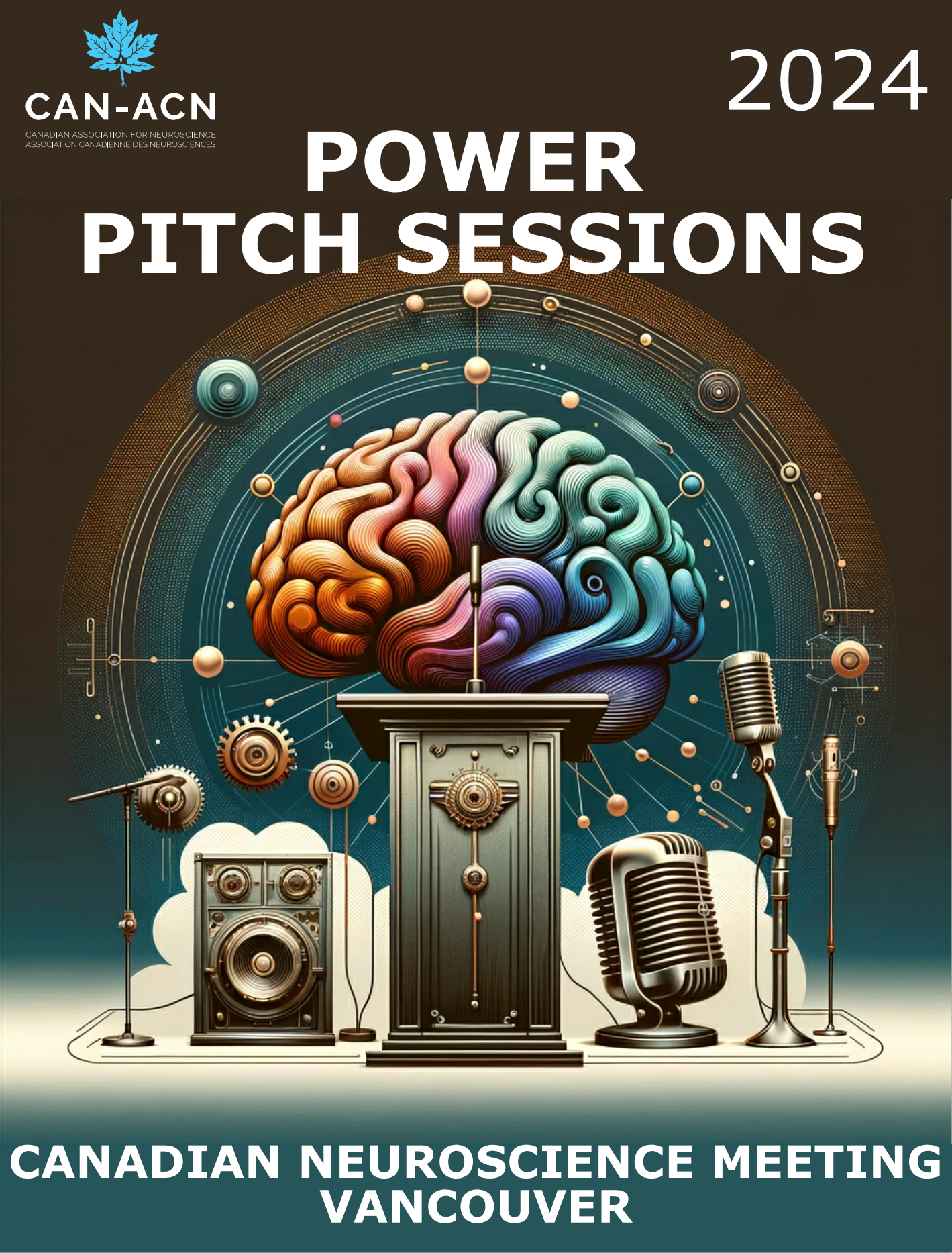
What are Power Pitch Sessions?
Power Pitch Sessions at CAN 2024 offer a dynamic platform for trainees (Master’s, PhD and Post-Docs) to showcase their research in a short oral presentation. These sessions are designed to highlight the most innovative and compelling work in the field of neuroscience.
Who are the organizers?
Power Pitch sessions are organized by trainees, for trainees. The concept was proposed and session organized by J Quinn Lee & Gilberto Rojas Vite.
When will the Sessions Occur?
Every day of the CAN 2024 meeting, six participants will be chosen to present their research. The sessions will take place just before the afternoon poster session.
How are Presentations Structured?
Each presenter will have 3 minutes to share their findings. Your presentation should include three slides (excluding the introduction slide) to convey your key points effectively. To ensure smooth proceedings, we request no videos or animations.
How were speakers selected?
Poster submitter were asked to check the designated box during your abstract submission process, and selected by random draw by the session organisers.
Why Join the Power Pitch Sessions?
This is a chance for trainees to captivate an audience of peers and experts with their research insights. Join us!
Schedule
Session 1 – May 20, 3:00PM-3:30PM
| Poster Number | Abstract Title | Presenter |
| P1-A-2 | Characterizing neuropathy and retinopathy in a newly developed mouse model of abusive head trauma | Sydney Harris, Monash University |
| P1-C-71 | Induction and monitoring of ischemic stroke in freely behaving mice reveals behavioural sex differences of spreading depolarization | Andrew Boyce, University of Calgary |
| P1-C-59 | Probing mechanisms underlying enhanced spread of sensory-evoked cortical activity in a Huntington disease mouse model | William Rees-Jones, The University of British Columbia |
| P1-F-123 | Investigation of prefrontal dopamine dynamics during a novel model of context fear learning | Liv Engel, University of Toronto |
| P1-F-124 | The Effects of Acute Moderate-Intensity Exercise on Emotional Conflict Processing in Healthy Young Adults | Ching Liu, Department of Physical Education National Taiwan University of Sport |
| P1-G-148 | A labeled clinical-MRI dataset of Nigerian brains. | Eberechi Wogu, University of Port Harcourt |
Session 2 – May 21, 2:30PM-3:00PM
| Poster Number | Abstract Title | Presenter |
| P2-C-242 | Failure of action potential propagation along Purkinje cell axons in a mouse model of ataxia | Amy Smith-Dijak, McGill University |
| P2-B-184 | Sex Differences in Astrocyte-Neuron Dynamics in Chronic Neuropathic Pain in the Anterior Cingulate Cortex | Ana Leticia Simal Dourado, University of Guelph |
| P2-C-224 | Investigating the contribution of the zebrafish rostral migratory stream to neural repair | Aurélien Caron, University of Manitoba |
| P2-D-269 | Noradrenaline modulation of interneuron subtypes of the primary motor cortex during sensorimotor learning | Morgane Ruffel, Université Laval |
| P2-F-291 | Rewiring fear: Blocking M1 muscarinic receptors prevents contextual fear memory updating | Karim Abouelnaga, University of Guelph |
| P2-G-315 | Development of a novel, high-throughput flow cytometry method for evaluating synaptic protein signalling in isolated neuronal synaptosomes | Brian Deng, University of British Columbia |
Session 3 – May 22, 1:30PM – 2:00PM
| Poster Number | Abstract Title | Presenter |
| P3-B-352 | Excitatory glycine receptors in the adult hippocampus | Emily Hurley, Memorial University of Newfoundland |
| P3-C-395 | Aberrant astroglial metabotropic glutamate receptor 5 signaling in Alzheimer’s disease | Sanarya Aljaf, University of British Columbia |
| P3-C-396 | Expression, Phosphorylation, and Intercellular Transfer of α-Synuclein in the Retina | Lauren Levy, University of Toronto |
| P3-D-438 | Subtype-specific modulation of cortical interneuron populations by noradrenaline | Emmeraude Tanguay, Université Laval CERVO |
| P3-E-450 | Effects of neonatal endotoxin exposure on glucocorticoid regulation in the adult mouse brain | Hitasha Bajaj, University of British Columbia |
| P3-E-451 | Dissecting the cross-talk between H1R and CB1R in hypothalamic neurons in the Olanzapine-induced Metabolic Syndrome. | Federica Veneziani, University of Toronto |
Pitch your Science, Spark your Audience!
